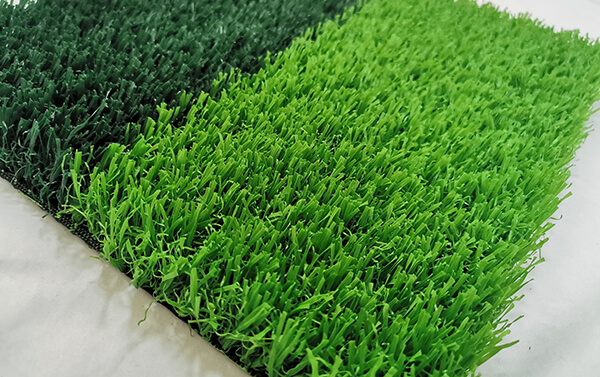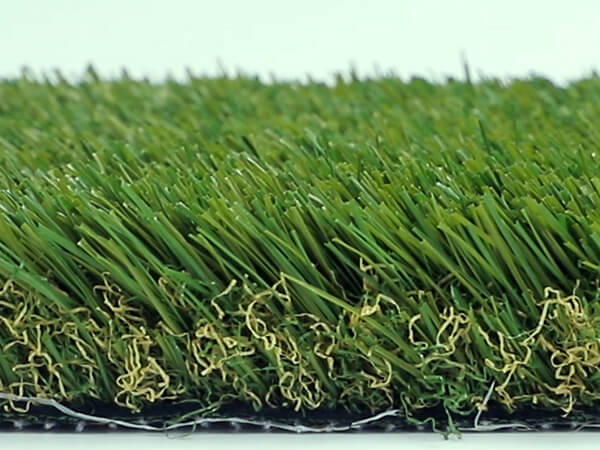
Introduction
Ever wondered how long your synthetic grass will last? With its growing popularity for both residential and commercial properties, synthetic grass offers a low-maintenance, long-lasting lawn without the hassle of mowing or watering. But just how durable is it?
In this guide, we’ll discuss the key factors influencing its lifespan, including material quality, installation, maintenance, and usage. You'll also learn expert tips to maximize the longevity of your synthetic lawn.
![factory price 35mm artificial synthetic grass factory price 35mm artificial synthetic grass]()
1. What Affects the Lifespan of Synthetic Grass?
1.1 Quality of Materials
The quality of synthetic grass materials plays a major role in its durability. The most common fibers used in synthetic grass include polyethylene, polypropylene, and nylon. Each of these materials has its own strengths and weaknesses. These materials are engineered to withstand a wide range of weather conditions. Additionally, UV-resistant additives are applied to the fibers to prevent them from fading due to prolonged sun exposure. High-quality turf products come with superior UV resistance, which significantly extends their lifespan.
1.2 Proper Installation
The way synthetic grass is installed can also impact its lifespan. Proper installation involves preparing a stable base with adequate drainage to prevent pooling of water. If synthetic grass is not installed professionally, it may lead to:
Uneven surfaces: Poor installation can cause the turf to sag or become uneven, which may lead to wear in certain areas.
Weed growth: A lack of proper drainage can trap moisture, encouraging weed growth under the turf.
Seam misalignment: Improperly aligned seams can cause turf sections to separate, leading to an uneven appearance.
Proper installation ensures that synthetic grass lasts longer by preventing these issues from arising.
| Installation Factor | Impact on Lifespan | Importance |
| Proper base preparation | Prevents sagging, uneven surfaces | Essential for durability |
| Adequate drainage | Prevents water pooling and weed growth | Critical for longevity |
| Seam alignment | Prevents turf separation | Ensures a smooth, even surface |
1.3 Climate and Weather Conditions
Synthetic grass is designed to withstand various weather conditions. However, extreme climates can have an impact on its longevity:
Excessive sunlight: UV rays can degrade the fibers over time, causing fading or discoloration if the turf lacks UV protection. Synthetic grass with proper UV resistance can help mitigate this issue.
Extremely cold weather: Very cold temperatures may cause certain materials to become brittle, leading to cracking or tearing. Choosing turf designed for colder climates can ensure its longevity.
Humidity: High humidity can contribute to the growth of mold or mildew if drainage is inadequate. Proper installation with good drainage can help combat this problem.
1.4 Usage Intensity
The level of foot traffic and activities on synthetic grass significantly affects its lifespan. Here’s how usage plays a role:
High-traffic areas such as sports fields or playgrounds tend to wear down artificial grass faster, especially if heavy use occurs without proper maintenance.
Residential lawns with moderate foot traffic can last much longer (15-20 years) if maintained properly.
Pet areas tend to experience more wear and tear due to constant use and potential damage from pet waste.
Choosing the right turf for specific areas and using it according to its intended purpose can prolong its life.
2. Expected Lifespan of Synthetic Grass
2.1 Residential Lawns
For residential applications, synthetic grass can last anywhere from 15 to 20 years with proper care. The factors contributing to its durability include:
Quality of the materials: Higher-end synthetic grass products made from durable fibers last longer.
Regular maintenance: Simple tasks like raking, rinsing, and debris removal can help prevent wear and extend the life of your lawn.
Proper installation: Ensuring the turf is installed with a proper sub-base and good drainage is key to its longevity.
Residential lawns that see moderate foot traffic can easily last 20 years with minimal upkeep, making it a great option for homeowners who want a hassle-free lawn that’s both beautiful and durable.
2.2 Sports Fields
Synthetic grass used in sports fields typically has a shorter lifespan due to the intense wear and tear it undergoes. Turf on a sports field is often exposed to high levels of foot traffic, and the frequency of use can shorten its life to 10 years or less. However, some premium synthetic turfs designed specifically for sports use are engineered to last longer, especially if regular maintenance is carried out.
2.3 Pet Areas
When it comes to pet areas, synthetic grass can withstand daily use by dogs and other animals. However, pets can cause more damage due to the following factors:
Increased wear: Pets running, playing, and scratching the surface can cause premature wear.
Odor and staining: Pet waste can leave unpleasant odors or stains if not cleaned promptly.
Infill degradation: The type of infill used can affect durability in pet areas. Sand or silica infill is often a good choice to reduce wear and heat buildup. With the right care, synthetic grass in pet areas can last 10-15 years.
3. How to Extend the Life of Your Synthetic Lawn
3.1 Regular Maintenance
While synthetic grass requires much less maintenance than natural grass, occasional upkeep is essential to keep it looking fresh:
Brushing: Regularly brushing the turf helps keep the fibers upright and prevents matting, especially in high-traffic areas.
Rinsing: Use a garden hose to rinse off dirt, debris, and pet waste. This is particularly important in dry climates where rain won’t naturally clean the grass.
Debris removal: Regularly removing leaves, twigs, and other debris helps prevent build-up, which can cause damage to the turf.
3.2 Timely Repairs
Fixing small issues early on can prevent them from becoming larger problems. Minor tears, rips, or separations in the seams can be easily repaired using adhesive and replacement turf. Timely repairs can prevent the need for costly full replacements.
3.3 Preventing Sun Damage
UV protection is essential in preventing fading and degradation. Ensure that the synthetic grass you choose comes with UV stabilizers to protect it from the sun's harsh rays. Additionally, avoid placing heavy objects on the turf for extended periods as this can lead to deformation or fading.
3.4 Cleaning Tips for Pet Owners
For homes with pets, cleaning is crucial to avoid odors and maintain the appearance of the synthetic grass:
Frequent rinsing: Rinse the turf regularly to remove pet waste and prevent odors.
Pet-friendly infills: Some infills are specifically designed to reduce odors, making them ideal for pet areas.
Cleaning after each use: Immediately clean up after your pet to prevent stains and bacteria build-up.
4. Signs Your Synthetic Grass Needs Replacement
4.1 Visible Damage
After many years of use, synthetic grass may start to show visible signs of damage, such as:
Worn-out blades: If the grass blades are noticeably worn or flattened, it may be time to replace the turf.
Uneven texture: Loss of texture or cushioning may indicate that the turf is no longer performing as it should.
4.2 Discoloration
Fading or discoloration of large sections of synthetic grass is often a sign of aging, especially if it has been exposed to excessive sunlight. UV protection and high-quality turf can help minimize this issue.
4.3 Structural Issues
Over time, synthetic grass may begin to loosen, creating tripping hazards or uneven surfaces. This is usually caused by poor installation or wear in high-traffic areas. If this occurs, consider repairing the affected areas or replacing the turf entirely.
5. Cost and Value: Is Synthetic Grass Worth It?
5.1 Initial Investment vs. Long-Term Savings
While the initial cost of synthetic grass may be higher than natural grass, it pays for itself over time through savings in maintenance, water bills, and fertilizers. For a residential lawn, the savings in water and maintenance can make up for the initial investment within 5-7 years.
5.2 Return on Investment
The longevity of synthetic grass means that over its 15-20 year lifespan, it provides an excellent return on investment. Not only does it save on ongoing lawn care costs, but it also increases curb appeal, which can boost the value of your property.
5.3 Environmental Impact
Synthetic grass is an environmentally friendly option as it conserves water and eliminates the need for chemical fertilizers and pesticides. This helps reduce the overall environmental footprint of maintaining a lawn.
Conclusion
The lifespan of synthetic grass can vary greatly depending on factors such as material quality, installation, climate, and usage. However, with the right care and maintenance, synthetic grass can last 15-20 years or longer. Investing in high-quality turf, ensuring proper installation, and keeping up with basic maintenance will ensure that your artificial lawn remains in excellent condition for many years to come.
XiHY offers premium synthetic grass products designed to withstand diverse weather conditions and high-traffic areas. Their products provide lasting durability and vibrant appearance, ensuring your lawn remains beautiful for years.
FAQ
Q: How long does synthetic grass last?
A: Synthetic grass typically lasts 15-20 years with proper care, including regular maintenance and professional installation.
Q: What factors affect the lifespan of synthetic grass?
A: The lifespan of synthetic grass depends on the quality of materials, installation, climate, and usage, such as foot traffic and pet activity.
Q: Can synthetic grass withstand heavy foot traffic?
A: Yes, synthetic grass can handle heavy foot traffic, especially when made from durable materials like nylon and installed correctly for high-traffic areas.
Q: Does synthetic grass fade over time?
A: High-quality synthetic grass with UV-resistant fibers can maintain its color for many years, even under direct sunlight.
Q: Is synthetic grass a good investment?
A: Yes, synthetic grass is cost-effective in the long term as it reduces maintenance costs, water bills, and provides a long-lasting lawn.













